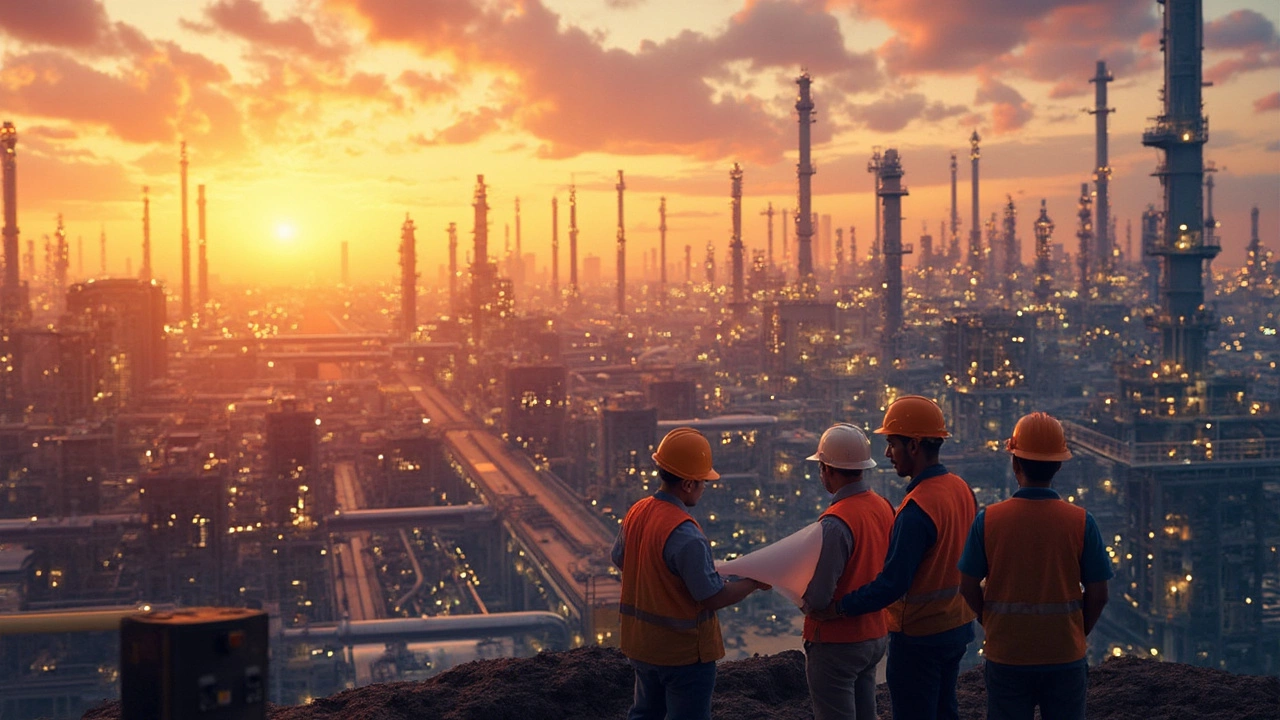Top Chemicals Companies in Asia – Who’s Leading the Market
If you work with chemicals, you probably wonder which Asian firms you should watch. The region packs a huge mix of old‑school giants and fast‑growing specialists. Knowing the key players helps you pick the right supplier, spot new product trends, and avoid costly delays.
Key Players and What They Make
China dominates the list with companies like Sinochem and China National Chemical Corp (ChemChina). They cover everything from petrochemicals and fertilizers to specialty polymers. Their scale means you can order big volumes at lower prices, but you may face longer lead times if demand spikes.
South Korea’s Lotte Chemical and LG Chem focus on high‑performance plastics, battery materials, and life‑science ingredients. They invest heavily in R&D, so you’ll find cutting‑edge products like lightweight composites for automotive use.
Japan still leads in specialty chemicals. Sumitomo Chemical, Mitsubishi Chemical, and Daikin produce electronic‑grade resins, agro‑chemicals, and advanced coatings. Their reputation for quality makes them a go‑to choice for manufacturers who can’t afford defects.
India’s rising star is Deepak Nitrite and the Indian Oil Corporation group, both expanding into green solvents and specialty polymers. They offer competitive pricing and a growing export network.
Southeast Asia adds niche strength. Thailand’s SCG Chemicals and Singapore’s Hyflux (now focusing on water‑related chemicals) deliver specialty additives for food processing and construction.
Why These Companies Matter for Your Business
First, scale matters. Large Asian producers can meet high‑volume orders without breaking the bank. That’s a big plus if you’re scaling up or need consistent supply for a long‑term contract.
Second, innovation is fast here. Companies in South Korea and Japan pour billions into research, delivering new monomers, bio‑based plastics, and battery electrolytes. Partnering with them gives you early access to products that can set you apart from competitors.
Third, cost advantage isn’t just about cheap labor. Asian firms benefit from integrated supply chains—raw material sourcing, processing, and logistics often happen under one roof. Fewer handoffs mean lower shipping costs and quicker turnaround.
Fourth, sustainability is becoming a must‑have. Many top Asian chemical groups have announced carbon‑neutral goals and are expanding bio‑derived product lines. If your customers care about green credentials, these suppliers can help you meet those expectations.
Finally, risk management. Relying on a single source can backfire if geopolitical tensions or regulatory changes hit. Knowing a mix of Chinese, Indian, Korean, and Japanese firms lets you shift orders quickly and keep production humming.
To make the most of these companies, start by mapping your product needs to their strengths. If you need bulk PVC, look to Chinese petrochemical giants. For high‑purity electronic resins, turn to Japanese specialists. For sustainable packaging solutions, Korean firms often have the newest bio‑plastics.
Don’t forget to ask for sample shipments and certifications. ISO 9001, REACH compliance, and local safety data sheets are quick checks that can save headaches later.
In short, Asia houses the world’s most diverse set of chemical manufacturers. By understanding who does what, you can choose partners that fit your price, quality, and innovation goals. That’s the real shortcut to staying competitive in today’s fast‑moving market.

Largest Chemical Company in Asia: The Giant Behind India’s Booming Industry
Curious who dominates Asia’s chemical industry? This article digs into the largest chemical company in Asia, spotlighting its reach, reasons for its success, and ties to India’s fast-growing industry. It breaks down how this chemical giant stacks up against global players and what makes its influence huge in India. Discover facts you won’t find in basic industry lists, along with tips for businesses and professionals on collaborating with such giants. This read is for anyone interested in the heart of Asia’s chemical sector.
Read More